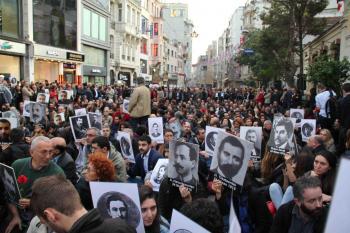Armenian Genocide
The first non-colonial genocide of the twentieth-century was the Armenian catastrophe in the Ottoman Empire during World War I. It started in early 1915, when the Young Turk regime rounded up hundreds of Armenians and hanged many of them in the streets of Istanbul, before beginning the genocidal deportation of most of the Armenian population to the desert, in which up to a million died or were murdered en route.
The Armenian minority in Ottoman Turkey had been subject to sporadic persecutions over the centuries. In 1894-96, these were stepped up with pogrom-like massacres. With the outbreak of the First World War, the Young Turk government proceeded far more radically against the Armenians. From 1915, inspired by rabid nationalism and secret government orders, Turks drove the Armenians from their homes and massacred them in such numbers that outside observers at the time described what was happening as ‘a massacre like none other,’ or ‘a massacre that changes the meaning of massacre.’ Although we do not have reliable figures on the death toll, many historians accept that between 800,000 and one million people were killed, often in unspeakably cruel ways, or marched to their deaths in the deserts to the south. Unknown numbers of others converted to Islam or in other ways survived but were lost to the Armenian culture. At the time a number of influential people spoke out against these atrocities, most notably the distinguished historian Arnold J. Toynbee, but it has only been since the 1970s that scholars have devoted anything like sustained attention to this human catastrophe. There is more than enough evidence to suggest that the mass murder of the Armenians was a case of genocide, as that crime was subsequently defined in the United Nations Genocide Convention of 1948. Surviving perpetrators of the Armenian genocide could certainly have been held to account in an international criminal court.
